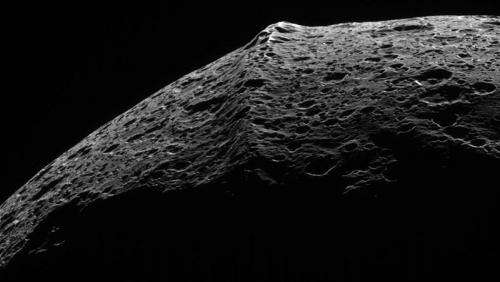How did the equatorial ridge on Saturn's moon Iapetus form?

Saturn's moon Iapetus is one of the most unusual moons in our solar system.
Perhaps the most bizarre feature of Iapetus is its equatorial ridge, a 20-km (12.4- mi) high, 200-km (124-mi) wide mountain range that runs exactly along the equator, circling more than 75 percent of the moon.
No other body in the solar system exhibits such a feature, and as Dombard et al. show, previous models have been unable to adequately explain how the ridge formed.
The authors now propose that the ridge formed from an ancient giant impact that produced a subsatellite around Iapetus.
Tidal interactions with Iapetus ultimately led to orbital decay, eventually bringing the subsatellite close enough that the same forces tore it apart, forming a debris ring around Iapetus.
Material from this debris ring then rained down on Iapetus, creating the mountain ring along the equator.
More information: Delayed formation of the equatorial ridge on Iapetus from a subsatellite created in a giant impact, Journal of Geophysical Research-Planets, doi:10.1029/2011JE004010 , 2012.
Provided by American Geophysical Union




















